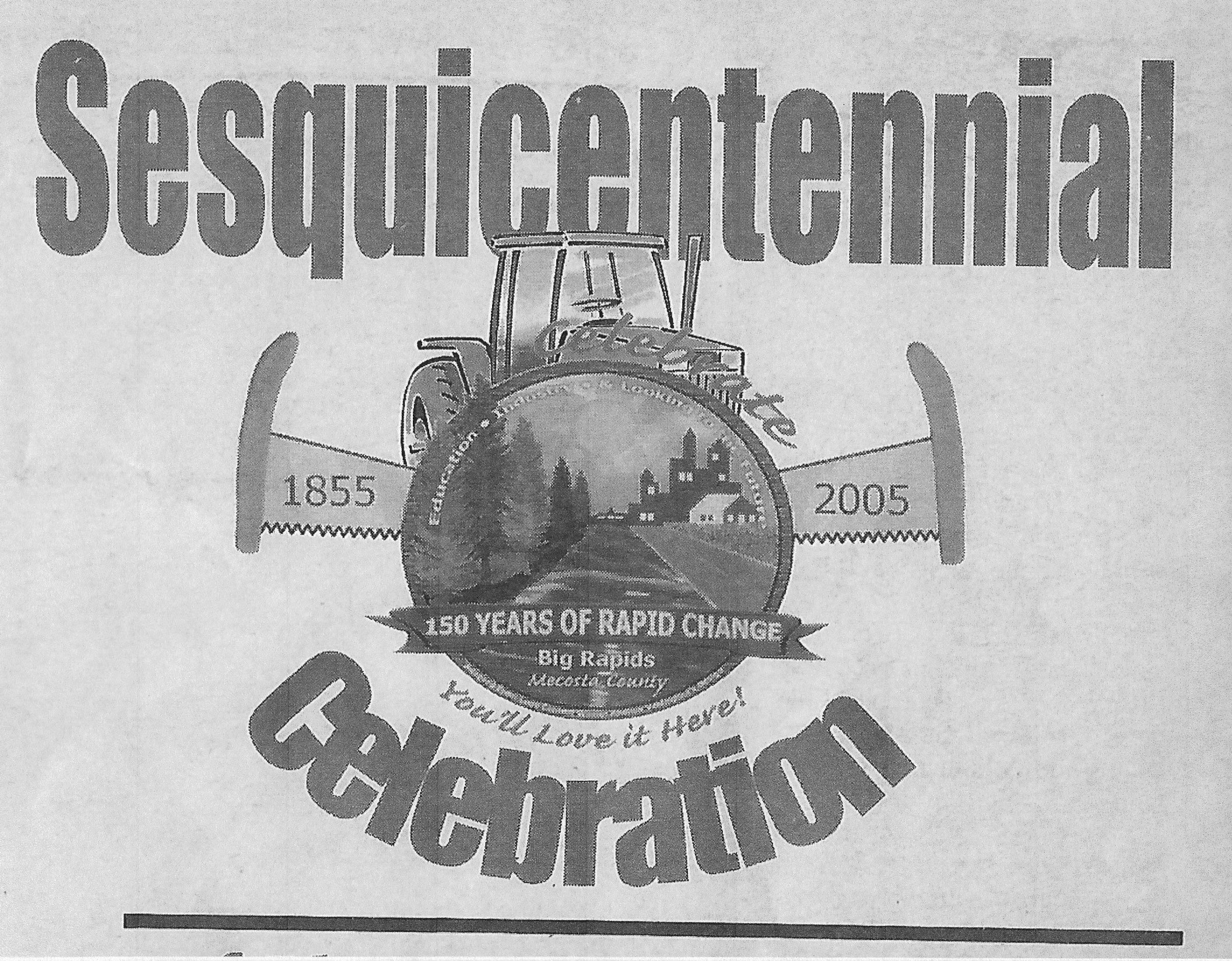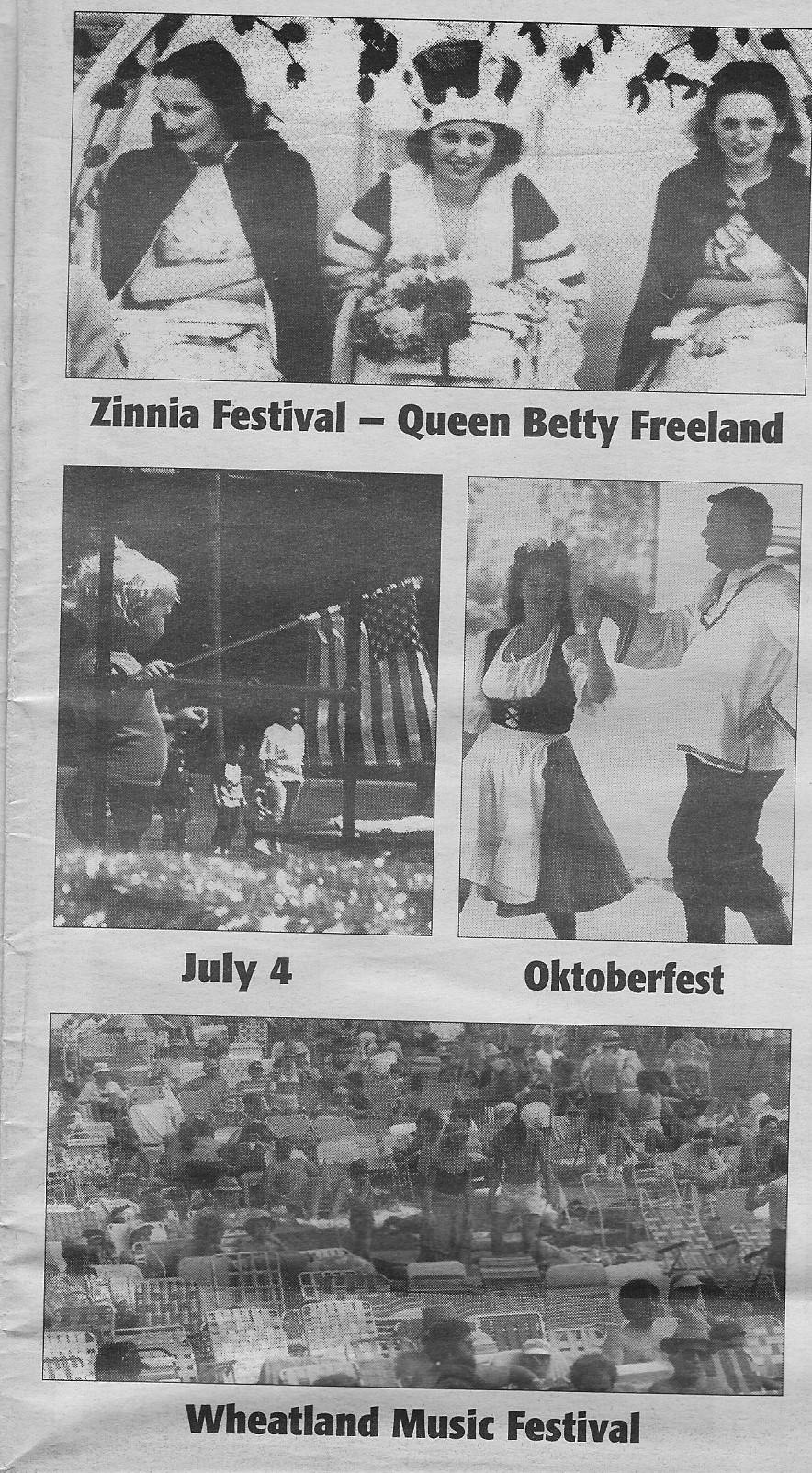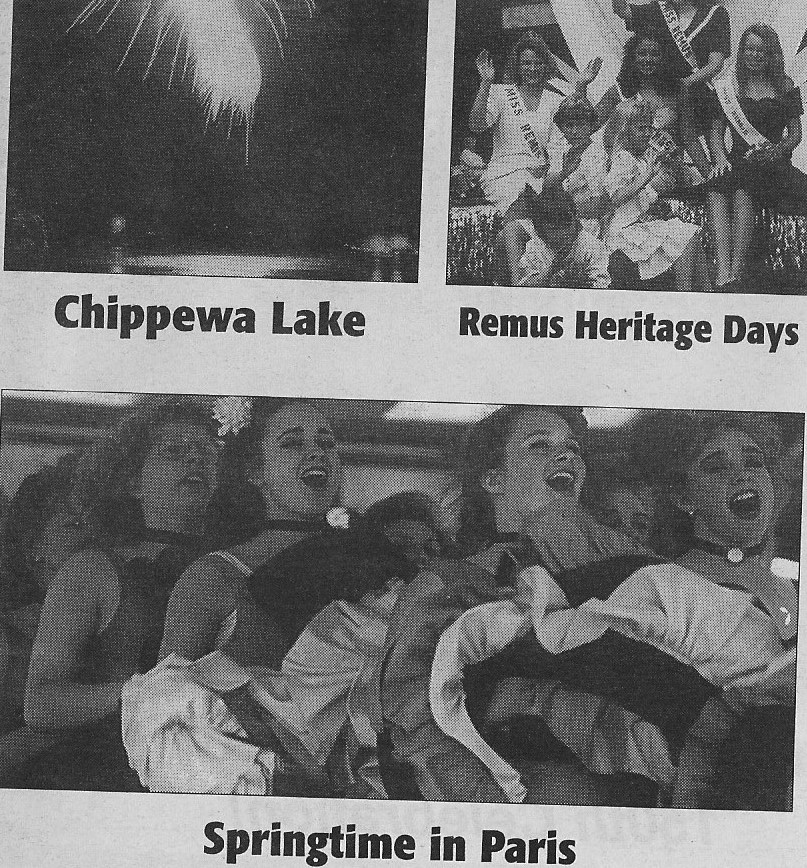
Part III - Culture, a supplement to the Big Rapids Pioneer Newspaper. Used with permission.



BIG RAPIDS AND COUNTY KNOW HOW TO CELEBRATE
By Jim Bruskotter, Managing Editor
Festivals are one measure of a community's desire and ability to celebrate life with fellow citizens and/or visitors and most often follow a theme - historical, cultural, artistic, mucical and others.
Oven the years, Big Rapids and communities in Mecosta County have rolled out a long, long carpet of festive attractions for townies and visitors alike.
In 1987, Marian Davis Beadle recalled Big Rapids Zinnia Festival of the 1930's as the city prepared to renew that short-lived tradition some 50 years later.
In an "Up and Down the River" column prepared for the Mecosta County Council for the Humanities, Beadle began with a description of life in Big Rapids as it emerged from the Great Depression and just prior to the beginnings of World War II in Europe.
"Propsperity was on the upswing, and men being employed at Hanchett's, the Falcon, and other manufacturing firms," she wrote, "Bank clerks, mechanics, salesmen at automobile agencies, doctors, dentists and lawyers were also enjoying America's new found prosperity. Married women, with very few exceptions, stayed home to 'keep house' and mind the children. The few employed married women were school teachers" who had to resign their positions if married.
She also described how women spent long hours washing and drying clothes with old wringer washers and clothes lines without the modern-day luxuries of automatic washers and dryers and how hanging the clothes on outdoor lines for the first time each spring became backyard social events among neighborhood women.
"People took pride in thri homes," she continued. "The yards were carefully tended and many had lovely flower and small vegetable gardens. Nothing was finer than picking an ear of corn just before dinner, dropping it into boiling water and serving it on a platter, all within 20 minutes.
She also wrote about the stately maple and elm trees lining the streets; the use of porch swings in the evenings to chat with other neighbors strolling the streets, the slivers of ice provided to neighborhood children as the ice man made his rounds, the youthful pleasures of listening to the radio, jigzaw puzzles, picnics and making scrapbooks; the Saturday night card games for adults, and the many public figures of the era - Joe Louis, the Dutchess of Windsor, Franklin D. Roosevelt, Shirley Temple, the Dionne quintuplets, and Amelia Earhart.
Against the background, Beadle explained how the Zinnia Festival emerged in 1936 under the leadership of Mrs. Frank (Gaynelle) Klesner and Chamber Secretary George Richards.
Beadle's research revealed that the first planned three-day festival was canceled when a summer heat wave scorched nearly half of 29,000 zinnias planted in the city, but she was able to describe in detail festivals held in 1937 and 1938, noting that the event vanished permanently during World War II.
But, for at least two years, the Zinnia Festival was big time in Big Rapids with three-day festivals complete with queens and thri courts, sporting events, contests, musical programs and more - and, of course, thousands upon thousands of zinnias planted in beds along State Strret and many other places in the city.
The zinnia chosen as the city flower in a contest conducted by the Big Rapids Garden Club even led to the city proclaiming itself as the zinnia capital of the nation.
But, the war took its toll in more ways than on the battelfields and attempts to revise the zinnia tradition 50 years later fizzled as well.
Other multi-year celebrations that have come and gone include the Big Rapids Oktoberfest, the Great American Baloon Festival, Paris in the Park, Stanwood's Buffalo Barbecue, Barryton's Bean Days and the Morley Sucker Shoot.
And, then, of course, there are the annual high school homecoming celebrations throughout the county and at Ferris Institute, College and University.
Singular celebrations have included centennial celebrations for just about every community in the county and other anniversary celebrations, too. For instance, Big Rapids has celebrated for its 25th, 50th, 75th, 100th and 125th anniversaries and is in the process f a long celebration of its 150th year since the first permanent settlers began their new lives along the banks of the mighty Muskegon River.
And the county has many more festivals that have emerged over the years and continue yet today - Wheatland Music Festival, Remus Heritage Days, the Big Rapids Arts and Crafts Festival, Chippewa Lake Days, the Barryton Lilac Festival, Mecosta Old Fashioned Days, Morley's Celebration on the Pond and Big Rapids River Days included.
Return to Mecosta sesquicentennial Page
Return to Home Page




